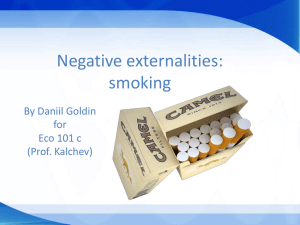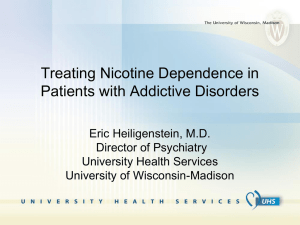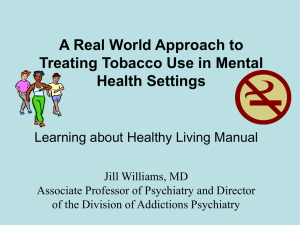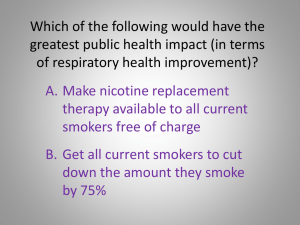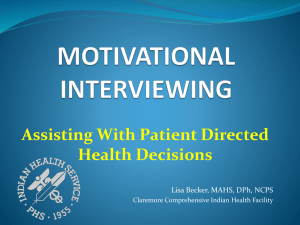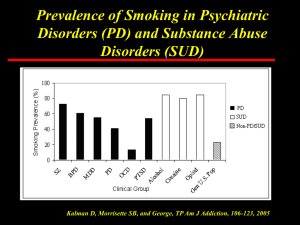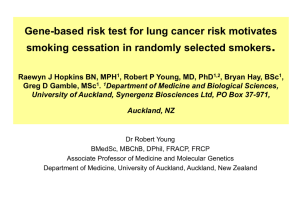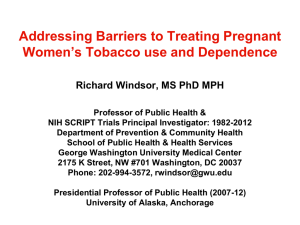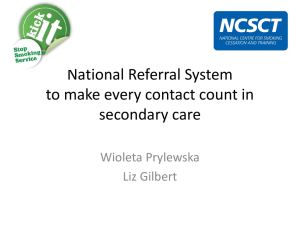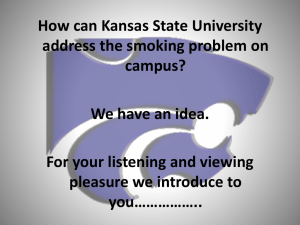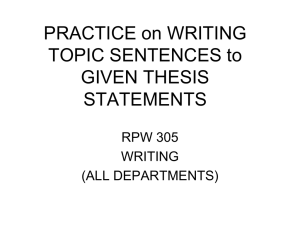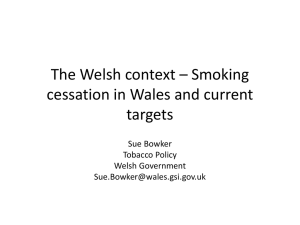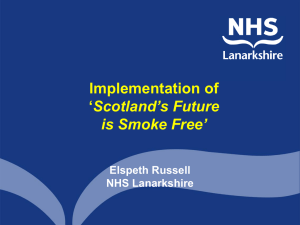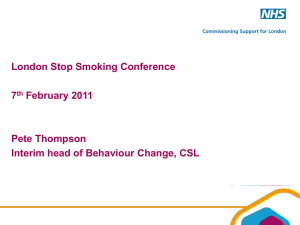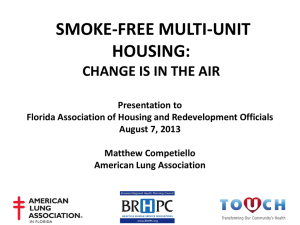Smoking: No Butts... Action to cut smoking rates and reduce tobacco
advertisement
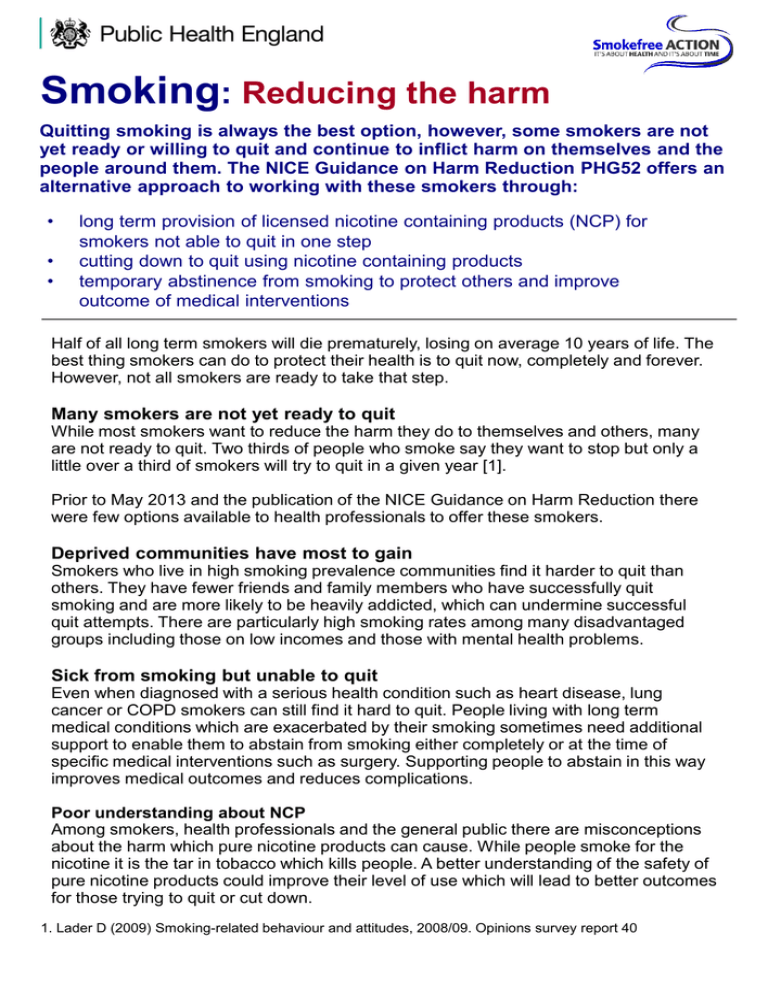
Smoking: Reducing the harm Quitting smoking is always the best option, however, some smokers are not yet ready or willing to quit and continue to inflict harm on themselves and the people around them. The NICE Guidance on Harm Reduction PHG52 offers an alternative approach to working with these smokers through: • • • long term provision of licensed nicotine containing products (NCP) for smokers not able to quit in one step cutting down to quit using nicotine containing products temporary abstinence from smoking to protect others and improve outcome of medical interventions Half of all long term smokers will die prematurely, losing on average 10 years of life. The best thing smokers can do to protect their health is to quit now, completely and forever. However, not all smokers are ready to take that step. Many smokers are not yet ready to quit While most smokers want to reduce the harm they do to themselves and others, many are not ready to quit. Two thirds of people who smoke say they want to stop but only a little over a third of smokers will try to quit in a given year [1]. Prior to May 2013 and the publication of the NICE Guidance on Harm Reduction there were few options available to health professionals to offer these smokers. Deprived communities have most to gain Smokers who live in high smoking prevalence communities find it harder to quit than others. They have fewer friends and family members who have successfully quit smoking and are more likely to be heavily addicted, which can undermine successful quit attempts. There are particularly high smoking rates among many disadvantaged groups including those on low incomes and those with mental health problems. Sick from smoking but unable to quit Even when diagnosed with a serious health condition such as heart disease, lung cancer or COPD smokers can still find it hard to quit. People living with long term medical conditions which are exacerbated by their smoking sometimes need additional support to enable them to abstain from smoking either completely or at the time of specific medical interventions such as surgery. Supporting people to abstain in this way improves medical outcomes and reduces complications. Poor understanding about NCP Among smokers, health professionals and the general public there are misconceptions about the harm which pure nicotine products can cause. While people smoke for the nicotine it is the tar in tobacco which kills people. A better understanding of the safety of pure nicotine products could improve their level of use which will lead to better outcomes for those trying to quit or cut down. 1. Lader D (2009) Smoking-related behaviour and attitudes, 2008/09. Opinions survey report 40 What councils can do The NICE Guidance on Harm Reduction is among the first attempts in the world to set out a structured approach to offering smokers for whom quitting in one step has not been a success an alternative approach. Its purpose is to: 1. 2. 3. 4. Raise awareness of nicotine containing products and ensure that the public and health professionals know the licensed products are effective and safe to use. Provide materials for the public about harm reduction to ensure smokers are aware of the benefits of harm reduction. Provide support to stop smoking services on the delivery of harm reduction while ensuring that their work to support people to quit in one step is not undermined. Highlight the training needs for health staff particularly in relation to their awareness of nicotine containing products and how to support smokers in different circumstances. Implementation of the guidance This is an emerging area for public health and practice continues to be developed. There are many things which could be done to implement the guidance over time but several measures which local areas could implement immediately. These include: 1. Ensure that stop smoking services retain their core role supporting people to quit 2. Provide information to the public, stop smoking service staff, health and council staff. 3. Ensure local stop smoking services welcome smokers who have been independently using harm reduction approaches and provide them with advice in line with NICE Guidance. 4. Target specific high prevalence groups with additional support in line with NICE guidance. 5. Embed a harm reduction approach work on smokefree homes to ensure children are protected from secondhand smoke and that fire risks are reduced. The NICE Guidance on Harm Reduction provides alternative routes for smokers who are not willing or able to engage in quitting in one step. It has the potential to make a difference to the lives of the most disadvantaged groups. It is supported by separate briefings on the following: Smoking: health inequalities Smoking: quitting Smoking: children ASH brief: permitting e-cigarette use on your premises May 2013


